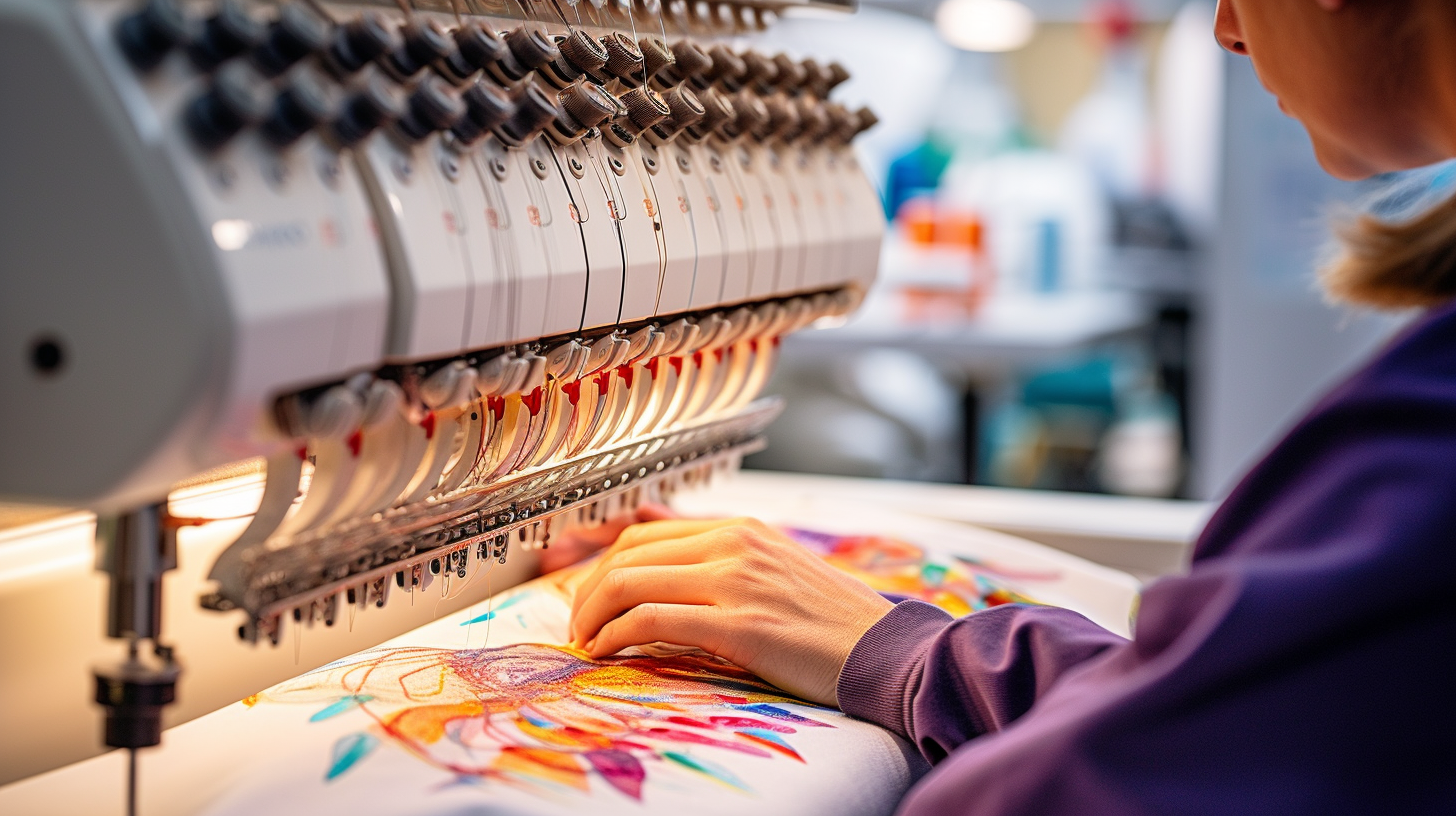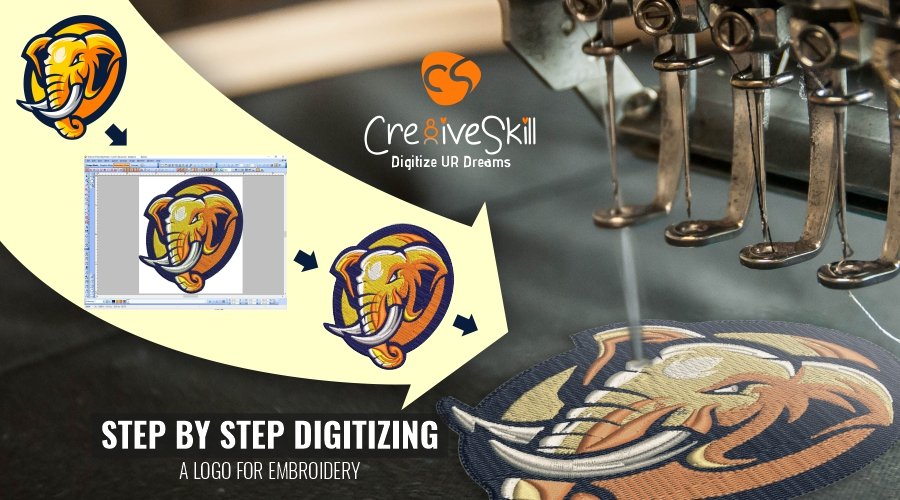Expert Digitizing for Embroidery: High-Quality Styles
Wiki Article
Grasping the Embroidery Digitizing Refine: Your Ultimate Overview
Embroidery digitizing is a meticulous craft that needs precision and expertise to equate detailed styles into digital layouts for maker embroidery. As artisans get started on this journey to grasp the embroidery digitizing process, an extensive understanding of the basics establishes the structure for quality. However, beyond the fundamental understanding exists a realm of advanced software program, specialized devices, and nuanced methods waiting to be checked out. By diving right into the subtleties of digitizing, one can unlock a globe of imaginative possibilities and elevate their embroidery jobs to brand-new elevations.
Comprehending Embroidery Digitizing Basics
Needlework digitizing basics develop the structure whereupon detailed styles are equated right into machine-readable formats for precise sewing. This preliminary action in the embroidery digitizing procedure is crucial for ensuring that the final stitched item is a loyal representation of the initial layout. Comprehending embroidery digitizing basics includes understanding vital concepts such as stitch types, stitch direction, density, underlay, and pull compensation.Stitch kinds play a vital role in identifying the visual and textural result of the embroidered style. By picking the proper stitch type, whether it be satin, fill, or running stitch, digitizers can achieve the wanted impact and enhance the general top quality of the embroidery. In addition, stitch instructions influences the flow and measurement of the style, while density identifies the spacing and coverage of the stitches.
In addition, padding stitching provides stability to the layout by protecting the material and protecting against distortion throughout the embroidery procedure. Draw compensation is an additional necessary consideration to combat the all-natural tendency of fabric to contract when stitched. Understanding these embroidery digitizing basics is fundamental for developing professional-quality embroidered products.
Selecting the Right Digitizing Software Application
Selecting the appropriate digitizing software is a critical choice that dramatically impacts the effectiveness and top quality of the embroidery digitizing process. Digitizing for Embroidery. When picking the right digitizing software application, it is vital to think about factors such as the complexity of layouts you prepare to create, the user-friendliness of the software application, the degree of consumer assistance used, and the compatibility with your needlework makerThere are various digitizing software choices offered on the market, ranging from basic programs for newbies to advanced software application for expert digitizers. Some popular options consist of Wilcom EmbroideryStudio, Hatch Needlework Software, and PulseID. These software supply a large range of devices and attributes to assist you develop detailed designs with simplicity.
Prior to deciding, it is a good idea to check out the different software application choices through cost-free tests or demonstrations to determine which one best suits your demands. Additionally, reading reviews and seeking referrals from seasoned digitizers can give valuable insights into the staminas and weaknesses of each software (Digitizing for Embroidery). By carefully evaluating your demands and comparing the functions of various digitizing software, you can make an enlightened selection that improves your embroidery digitizing operations
Digitizing Devices and Strategies

Optimizing Style Setup for Needlework
Grasping the details of design settings is essential in accomplishing optimal cause the needlework digitizing procedure, structure upon the foundation laid by understanding digitizing devices and techniques. When optimizing style settings for needlework, it is important to think about variables such as stitch type, density, rug, pull payment, and registration. More Bonuses Stitch kind selection influences the general feel and look of the style, with options like satin, fill, and running stitches using various appearances and effects. Thickness describes the spacing and density of stitches, affecting the style's coverage and toughness. Correct padding sewing supplies stability and avoids material distortion, particularly for complex layouts or on stretchy materials. Draw settlement changes for material stretch during stitching, making certain accurate layout duplication. Enrollment settings straighten various components of the style properly, preserving overall design stability. By blog here fine-tuning these design settings, embroiderers can boost the top quality and precision of their stitched creations.
Troubleshooting Common Digitizing Issues
When experiencing usual digitizing problems during the embroidery process, it is vital to comprehend the root causes and execute efficient solutions without delay. One typical trouble is stitch density problems, where stitches may be too thick, causing the material to pucker, or too sporadic, leading to gaps in the layout. Readjusting the stitch density settings in the digitizing software application can help fix this issue.Another frequent challenge is string breaks throughout the needlework process. This can happen as a result of numerous reasons such as wrong stress setups, plain needles, or using low-grade thread. Making sure correct maintenance of the needlework equipment, consisting of regular needle modifications and tension changes, can decrease the event of thread breaks.
Furthermore, design enrollment errors can result in misaligned aspects within the embroidery style. Examining the style placement in the digitizing software application and making essential modifications before stitching can aid in avoiding this concern. By dealing with these typical digitizing concerns immediately and successfully, you can make sure a smoother needlework process and high-quality finished items.
Verdict
In final thought, mastering the embroidery digitizing process requires a solid understanding of the basics, the right option of software, and understanding of devices and techniques. Enhancing layout settings and troubleshooting usual digitizing concerns are critical action in making sure premium needlework outcomes. By adhering to these actions faithfully, one can attain accuracy and effectiveness in the find more digitizing procedure.Report this wiki page